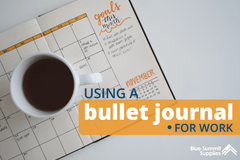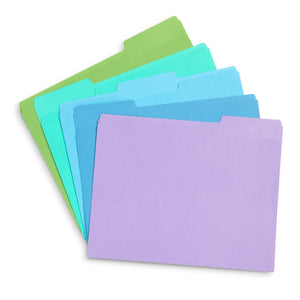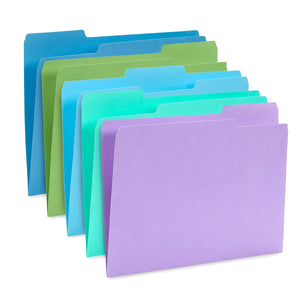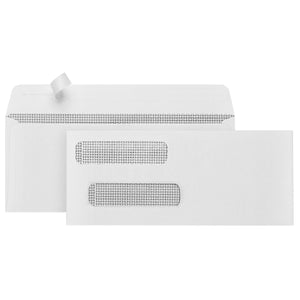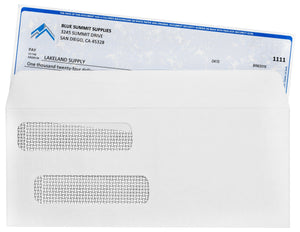Let’s talk about notebooks. They have hundreds of uses—most notably for studying, taking work notes, planning, and journaling. We’re big fans of journaling as a reflection method, meditation practice, and form of documentation! But notebooks come in all shapes and sizes and with many considerations to choose from—binding types, page type, cover thickness, length and width, book thickness, and more. Below we explain the difference between common notebook types and share notebook size charts that will help you choose the right notebook for your specific needs.
Common Types of Notebooks Explained

Spiral Notebooks
Spiral notebooks have a spiral binding that keeps the pages together. The spiral binding comes in various sizes and thicknesses, ranging from spiral wires to thicker plastic spirals. The spiral binding can enclose any type of paper, but it is most often made up of lined pages.
You might choose a spiral notebook vs. bound notebook if you need or want to be able to lay the book flat on one single page. The spiral spine allows the book to be opened and flipped to any page, and the book is guaranteed to stay flat compared to thicker bound notebooks, which can struggle to lay flat.
The downside to this style is that the spiral spine takes up extra space. These notebooks don’t stack as easily and can get tangled with other spiral bound notebooks. The design may also cause pages to fall out if you are not careful when opening, closing, and flipping the pages of the notebook.

Bound Notebooks
Bound notebooks have a flat spine. They are held together with sewn pages that are glued together and then covered. These pages can be lined, blank, grid, dotted, or any combination.
These types of notebooks are ideal for journaling, but they can also be used for school work, workplace notes, diary entries, yearly planners, and more. The covers can be any number of textures, thicknesses, and designs, and you can find them in both hard and soft cover options.
The benefit of this type of notebook is that it can hold a lot of pages and is easily stacked and stored. The downside is that bound notebooks cannot flip to one single page, only a full spread, and they can struggle to lay flat on a surface.

Composition Notebooks
Composition notebooks are a type of bound notebook. They are common writing notebooks for students and are occasionally used in offices as well. They feature lined pages on the inside and a notable black and white spotted pattern on the cover.
The marble notebook pattern has origins as far back as 12th century Japan, when artists created the marble texture using watercolor. There’s even an emoji of the composition notebook pattern. 📓
They aren’t known for their quality, but they are an inexpensive option for students, classrooms, and workplaces that go through a lot of notebooks.

Laboratory or Scientific Notebooks
What sets laboratory or scientific notebooks apart from other notebooks are the included details found inside. These notebooks are generally lined, but they may also contain grid pages.
They are designed for use by students, scientists, or people working in a laboratory. The beginning of the notebook includes a table of contents to help the user indicate what will be found on which page. There are spaces for additional details on each page, such as the notebook's page number, a title, project number, dates, and signatures.

Bullet Journals
Bullet journals are a type of bound notebook with a dot grid pattern inside. The dots on the inside can be used to design your own planner and bullet journal system.
It’s a creative outlet that allows you to design your own spreads and planning system.
📙 Learn more about Setting Up and Using a Bullet Journal for Work.

Pocket Notebooks
Pocket or field notebooks are simple notebooks in a compact size. They are small enough to fit in a pocket or small bag, so you can keep them on you at all times. This makes them ideal for travel journaling or taking notes on the go.
Depending on how you plan to use the notebook, the inside of these notebooks might be lined, blank, dotted, or grid patterned.
Not sure how to use a travel notebook? Read our list of Travel Journal Ideas for Your Next Adventure.
Notebook Size Chart
Follow our notebook size guide to choose the notebook that’s right for you. We’ve included common uses based on notebook size, but everyone has their own personal preferences. Keep in mind these are common sizes, but the sizes tend to vary slightly depending on the cover thickness and notebook brand you choose. Consider how and where you will store your notebook, what you will write inside it, and how often you will carry it with you when choosing the size that works best for you.
Notebook Size |
Common Names |
Common Uses |
|
3.5 x 5 inches |
Passport |
|
| 3.5 x 5.5 inches | Field Notes / Pocket |
|
|
4 x 6 inches |
A6 |
|
|
5 x 7 inches |
B6 |
|
|
5 x 8.25 inches |
Standard / Wide / Cahier |
|
|
6 x 8.25 inches |
A5 |
|
|
7 x 10 inches |
B5 |
|
|
8.25 x 11.75 inches |
A4 |
|
Moleskine Size Guide
Moleskine is a popular brand of notebook. Use our Moleskine size chart to pick the best option for you, depending on how you plan to use your notebook.
They come in many different colors and sizes, with different page types inside, including ruled, plain, square grid, or dotted. Depending on how durable or transportable you’d like your notebook to be, the covers are available in both hard and soft.
Moleskine |
Common Names |
Common Uses |
|
3.5 x 5.5 inches |
Field Pocket |
|
| 4.5 x 7 inches | Medium |
|
|
5 x 8.25 inches |
Large |
|
|
7.5 x 9.75 inches |
Extra Large |
|
Comparing Different Types of Notebooks
Still have questions? We’ll share some distinctions between a few common notebook types.
Composition Book vs. Notebook
These terms can arguably be used interchangeably. A notebook is a general term for any type of book that’s designed for writing in. A composition book might describe any lined notebook, but it specifically originates from the black and white speckled covered notebooks, which are commonly used by students. (See emoji: 📓)
Spiral vs. Composition Notebook
A composition notebook vs. spiral bound notebook comes down to how the book is held together. A composition notebook has a bound spine compared to a spiral spine, which affects how the book opens and whether or not it can lay flat on a surface. This is sometimes also referred to as perfect bound vs. spiral bound.
📒 Blue Summit Supplies carries various colors, sizes, and bulk packages of spiral notebooks.
Notebook vs. Journal
These terms are also often used interchangeably, with notebook carrying a broader meaning. A notebook can be used for a number of purposes, including studying, taking meeting notes, holding laboratory data, etc., whereas a journal is for—you guessed it—journaling!
📔 Blue Summit Supplies carries bulk travel journals in packs of 6 or 12 online.
Legal Pad vs. Notebook
Legal pads lay flat and are bound at the top. They usually have a margin line on the left side and are designed to lay flat on a desk or other surface. In comparison, a notebook is bound on the left side and has a front and back cover, making it more durable to move around or travel with.
More from Blue Summit Supplies
📕 The Pros and Cons of Online Notepads vs. Real Paper
📗 A Guide to the Best Pens: Expensive Pens, Cheap Pens, and Everything in Between
📘 The Importance of Reading Books: 8 Advantages of Reading Regularly
Do you love office and school supplies as much as we do? Follow our office supplies blog for the latest trends, guides, product comparisons, and more.
If you have any questions or want to talk to someone about office supplies, shoot us an email or connect with us on Twitter, Facebook, or Instagram.
 For more informative articles about office supplies, subscribe to our email newsletter!
For more informative articles about office supplies, subscribe to our email newsletter!
Never fear, you won't begin receiving daily sales emails that belong in a spam folder. Instead, we promise a fun weekly roundup of our latest blog posts and great finds from across the web. And if you lose interest, it's always easy to unsubscribe with a single click.




